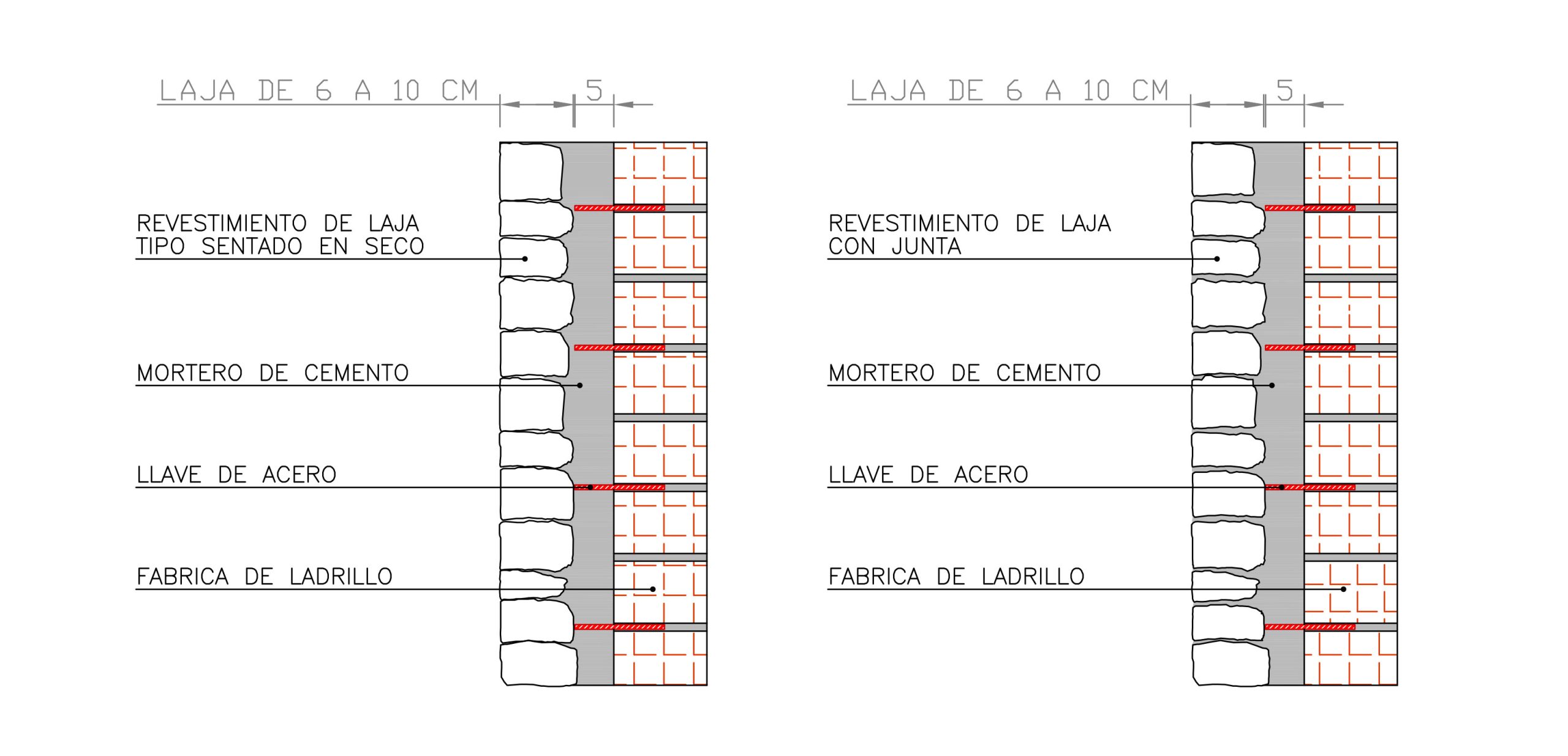Technical information > Professional area > Flagstone cladding

This type of natural stone cladding for vertical walls is laid with stone slabs or billets, generally slate, although quartzite, sandstone, etc. are also used for this purpose. They are laid one on top of the other, like masonry, but do not result in a load-bearing façade, but rather in a façade cladding.
Depending on aesthetic requirements, they can be laid dry, without a cement joint, or with cement-filled joints between stone and stone, in the manner of dry masonry or ordinary masonry.
The material usually occupies approx. 10 cm, depending on the material used of course, and together with the bonding materials, makes this type of cladding from 15 cm thick, which gives a great power of insulation to the building where they are placed.
Although it is a cladding of a rustic and rural origin or even from mountain areas, it has been adopted by modern architecture, thanks to its beauty, warmth and durability; and it is common to see it placed in modern buildings of new construction in residential urbanisations.
To ensure the adherence of the cladding, especially as it is so heavy, we must not only use the cement mortar that will join the stone slabs to the masonry, but we must also add, as a framework, keys or corrugated steel mesh, placed in staggered rows, to join the entire cladding to the vertical base, which is a brick or concrete masonry.
